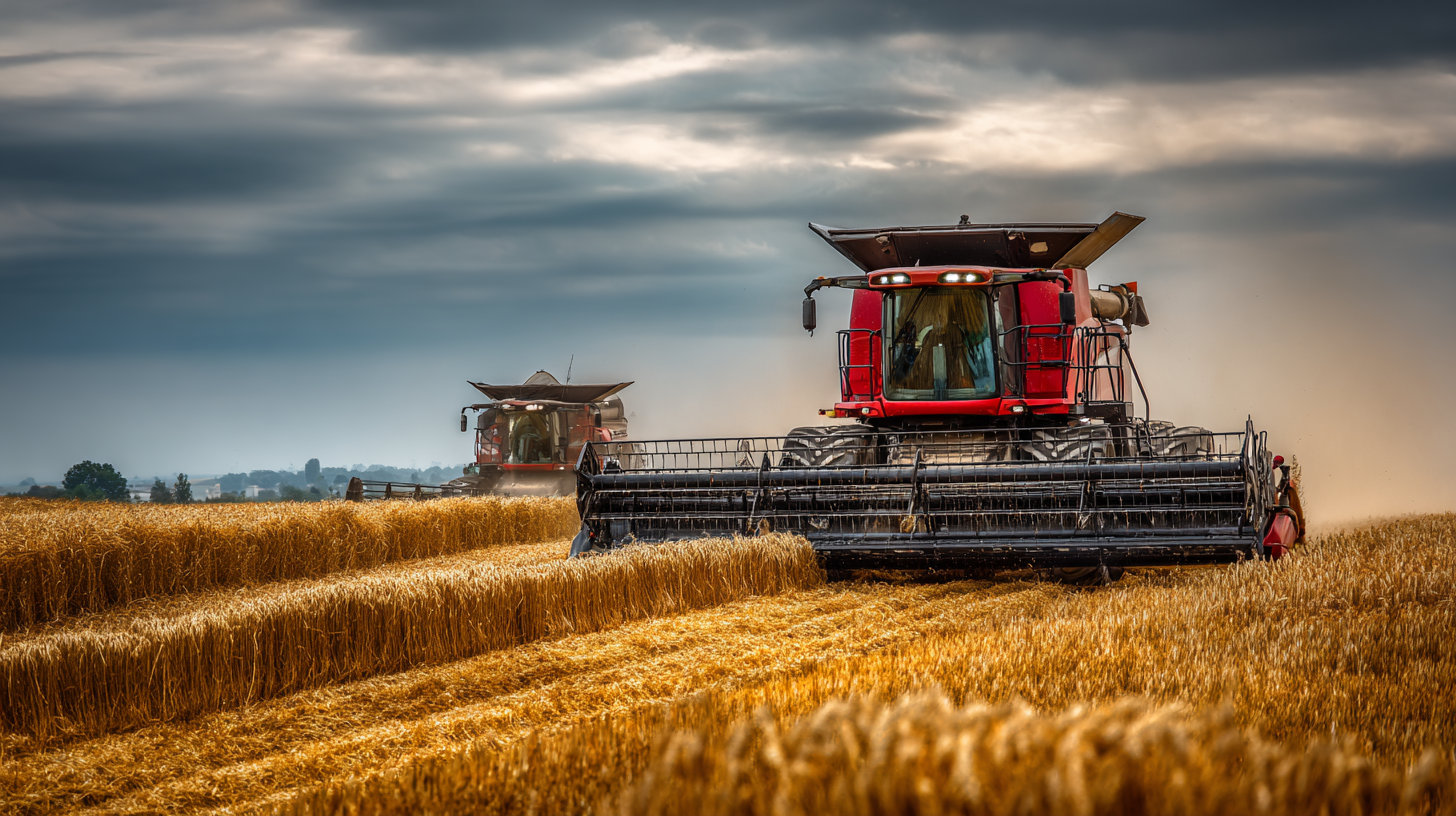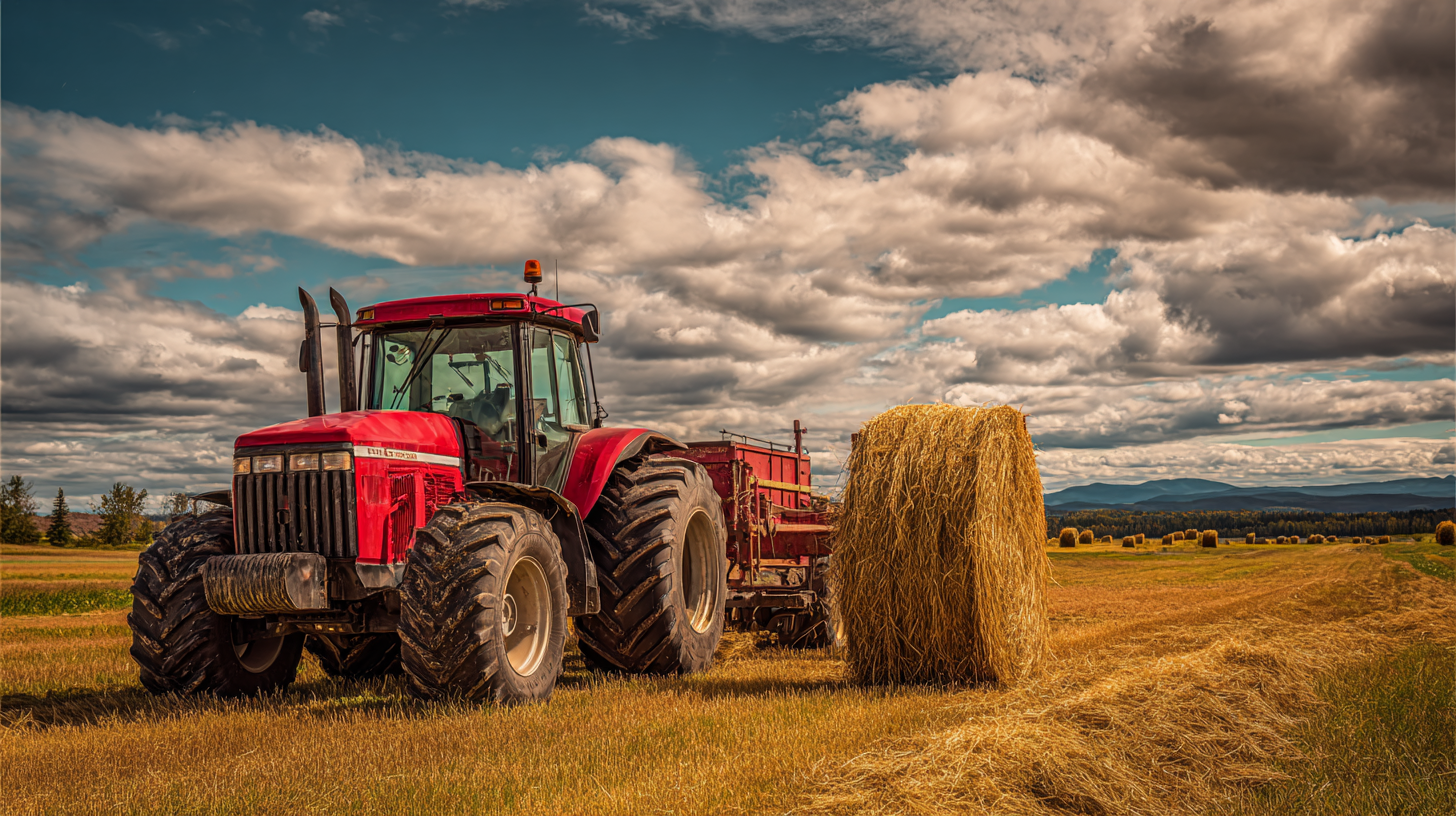Choosing the best farm equipment is crucial for optimizing agricultural productivity and efficiency in today's competitive farming landscape. According to a recent report by the American Society of Agricultural and Biological Engineers, the right farm equipment can increase crop yields by up to 30% and significantly reduce labor costs. With advancements in technology and the rise of precision agriculture, farmers face an overwhelming array of equipment options tailored to specific needs, from tractors to irrigation systems. This diversity underscores the importance of understanding the various types of farm equipment available, ensuring that each piece is aligned with the unique demands of the farm.

As agriculture continues to evolve, making informed choices about farm equipment not only affects immediate operational success but also influences long-term sustainability and profitability.
Choosing the right farm equipment is crucial for optimizing productivity and ensuring the success of agricultural operations. One key factor to consider is the type of crops being cultivated, as different crops may require specialized machinery. According to the USDA, farms utilizing precision agriculture techniques saw an average increase of 10-20% in yield due to tailored equipment that suits specific crop needs. For example, a combine harvester designed for small grains like wheat may not perform efficiently for larger grains like corn, underscoring the importance of selecting equipment that aligns with the farm’s primary output.

Another important consideration is the size and scale of the farming operation. A report by the American Society of Agricultural and Biological Engineers (ASABE) indicates that the right equipment capacity can significantly reduce operational costs, with optimal machinery utilization rates improving efficiency by up to 30%. For smaller farms, versatile and compact equipment might be ideal, allowing for easier maneuverability and less maintenance, while larger operations may benefit from high-capacity machines that can handle greater volumes. Ultimately, understanding the specific operational needs and future growth plans is essential in making informed decisions about farm equipment procurement.
When it comes to choosing the best farm equipment for agricultural needs, understanding the different types available is crucial. Various machinery, from tractors to seeders, serve specialized functions in enhancing farm productivity. In the age of precision agriculture, many farmers are embracing advanced technologies like GPS and automation to streamline operations. For instance, auto-steering systems not only improve efficiency but also drastically reduce the physical labor required by farmers.
Moreover, the rise of machine learning in smart farming presents innovative avenues for improving equipment rental and sharing practices. By analyzing data on farmers' preferences and needs, companies can better forecast which equipment will be in demand, ultimately helping farmers access the tools they require quicker and more economically. As more farmers adopt automation technologies, collaborative efforts in equipment sharing are set to transform traditional farming practices, enabling a more sustainable approach to agriculture.
Assessing your specific agricultural needs is crucial for optimal efficiency when selecting farm equipment. According to the USDA's 2021 Agricultural Resources and Management report, understanding your operational scale and crop types can significantly impact productivity. For instance, utilizing precision agriculture tools can increase crop yields by up to 20% while reducing resource waste. This emphasizes the need for farmers to conduct thorough assessments of their capabilities and requirements before investing in equipment.
Tip: Consider taking stock of your current farming practices and identifying areas where efficiency can be improved. This might involve analyzing soil health, crop rotation strategies, or labor costs. Implementing data-driven decisions can streamline operations and enhance overall performance.
Another important factor is the long-term sustainability of your equipment choices. A 2022 report from the International Journal of Agricultural Management highlights that adopting energy-efficient machinery not only lowers operational costs but also promotes environmental stewardship. By selecting equipment that aligns with both your agricultural goals and sustainability objectives, you can contribute to a more resilient farming future.
Tip: Engage with local agricultural extension services or equipment dealers to gain insights into the latest advancements in technology tailored to your specific needs. Personalized consultations can help you make informed decisions that cater to your unique production requirements.
When budgeting for farm equipment, it's essential to explore cost-effective choices that align with your agricultural needs. With the current market trends indicating a growth in the agricultural equipment market, including significant advancements in sorting equipment valued at approximately $475.39 million in 2024 and projected to reach $662.05 million by 2032, farmers must strategically plan their investments.
Tip 1: Prioritize equipment based on immediate needs. Assess what machinery is crucial for your operations and focus on those first. This tailored approach prevents overspending on unnecessary or luxury items while ensuring essential tasks are supported.
Tip 2: Consider financing options that might be available through agricultural subsidies or cooperative programs. Many governments introduce support schemes that make it easier to upgrade equipment without overwhelming your budget. Utilize these resources to enhance your operational capacity at a manageable cost.
Ensuring that purchases are made wisely will not only optimize productivity but also provide a solid foundation for growth in your farming activities.
As the global demand for sustainable practices intensifies, the agricultural sector is experiencing a significant shift towards innovative farm equipment that prioritizes both efficiency and environmental stewardship. With projections indicating that the green technology and sustainability market will balloon from $20.9 billion in 2024 to $100.26 billion by 2032, achieving a compound annual growth rate of 22.4%, it is essential for farmers to embrace these advancements. Modern farm machinery is increasingly being designed with eco-friendly features, such as reduced emissions and enhanced energy efficiency, allowing agricultural operations to minimize their ecological footprint while boosting productivity.

Additionally, the integration of technology, such as drones for environmental monitoring and AI-driven applications, is revolutionizing the farming landscape. These tools not only aid in precision agriculture but also promote sustainable farming methods, ensuring optimal resource use and reduced waste. By prioritizing innovation and sustainability in farm equipment choices, agricultural producers can navigate the challenges posed by a changing climate and fluctuating market demands, ultimately securing a viable future for their operations.